Capricorn Zeta System
Created by Lieutenant Commander Damien Maillet on Tue Sep 19th, 2023 @ 3:51pm
Overall Description
The Capricorn Zeta System contains an M1 Type V Red Dwarf star orbited by six planets. An asteroid belt lies between the third and fourth orbit. Furthermore, a Trojan dwarf planet follows in the orbit of the fourth planet. The star is much cooler than Sol, meaning temperate planets are much closer.
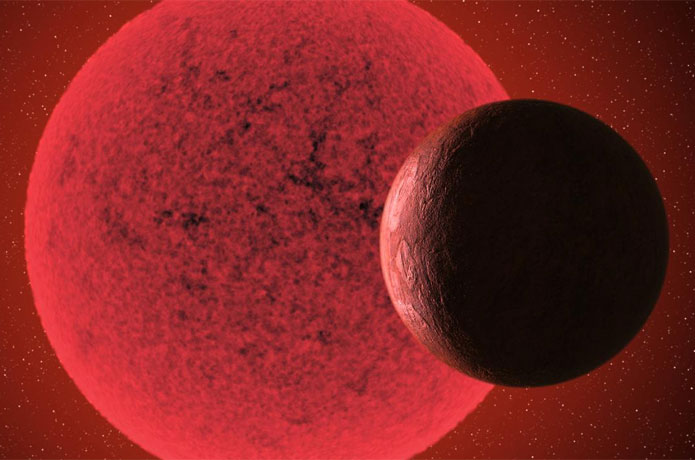
.
Federation Deep Space Station K-9 orbits the Capricorn Zeta star at a range of six Astronomical Units (897,600,000 km), twice the distance out from the outermost planet.
.
.
Planetary Breakdown
Capricorn Zeta I
Class
Class J Dark Blue/Yellow Gas GiantRadius
47,005 kmDistance from Star
0.043 AUMass
59.99 EarthsSurface Gravity
1.11g (no surface)Length of Year
5.28 Earth daysLength of Day
5.28 Earth days (tidally locked)Surface Temperature
543.2°CSurface Composition
Hydrogen, Helium, Sulfur (gas giant)Water
NoneAtmospheric Composition
79% Hydrogen, 16% Helium, 4% Carbon Dioxide, 1% Sulfur DioxideAtmospheric Pressure
479.9 atmMoons
NonePopulation
NoneNotes
Capricorn Zeta I is a "Hot Jupiter" gas giant. It is tidally locked to the star and slowly losing Hydrogen as a result of its extreme proximity.
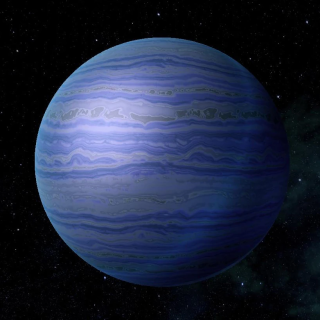
.
.
Capricorn Zeta II
Class
Class M Terrestrial PlanetRadius
6,631 kmDistance from Star
0.191 AUMass
0.76 EarthsSurface Gravity
0.71gLength of Year
49.46 Earth daysLength of Day
549.4 Earth days (extremely slow)Surface Temperature
16.1°CSurface Composition
Silicates with a small metal coreWater
21% liquid surface waterAtmospheric Composition
82% Nitrogen, 16% Oxygen, 2% Carbon DioxideAtmospheric Pressure
0.92 atmMoons
NonePopulation
50Notes
Capricorn Zeta II houses an outpost of scientists studying life on the planet. The extremely slow rotation of the planet means one side is very hot and the other very cold, with a temperate band along the twilight area. The outpost is equipped with engines permitting it to relocate; it moves every 50 days to remain in the temperate zone. Plant life appears to go dormant in extreme heat or cold while animal life hibernates or migrates.
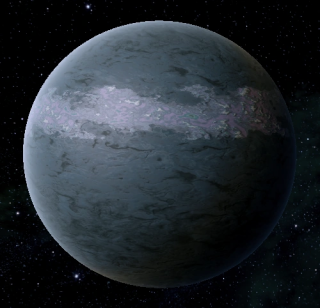
.
.
Capricorn Zeta III
Class
Class F Geocrystalline Terrestrial PlanetRadius
5,725 kmDistance from Star
0.367 AUMass
0.93 EarthsSurface Gravity
1.16gLength of Year
131.73 Earth daysLength of Day
760.8 Earth days (extremely slow)Surface Temperature
-46.4°CSurface Composition
Iron-nickel with a large metal coreWater
54% ice surface waterAtmospheric Composition
77% Nitrogen, 18% Methane, 5% ArgonAtmospheric Pressure
1.86 atmMoons
One (iron-nickel with a large metal core, radius of 1,700 km, gravity of 0.3g, no atmosphere)Population
750 (across planet, moon, and nearby asteroid belt)Notes
Capricorn Zeta III and its moon are very cold but contain a wealth of mineral resources, including diburnite and dilithium. A fully contained colony exists, supporting mining operations on the planet, the moon, and across the asteroid belt.
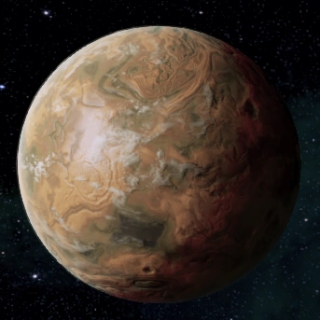
.
.
Asteroid Belt
Class
Asteroid beltRadius
N/ADistance from Star
0.688 AU (average)Mass
0.0008 EarthsSurface Gravity
N/ALength of Year
232.19 Earth yearsLength of Day
N/ASurface Temperature
N/ASurface Composition
Mostly SilicatesWater
N/AAtmospheric Composition
N/AAtmospheric Pressure
N/AMoons
N/APopulation
N/ANotes
Thousands of asteroids of all sizes populate the Capricorn Zeta asteroid belt. None are large enough to support a population. Workers from the colony on Capricorn Zeta III frequently seize asteroids for mining.
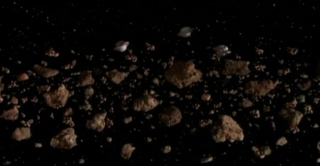
.
.
Capricorn Zeta IV A
Class
Class I White/Red Gas GiantRadius
25,865 kmDistance from Star
1.132 AUMass
17.32 EarthsSurface Gravity
1.05g (no surface)Length of Year
338.13 Earth yearsLength of Day
26.4 Earth hoursSurface Temperature
-142.7°CSurface Composition
Hydrogen, Helium, Ammonia, Sulfur (gas giant)Water
IcesAtmospheric Composition
83% Hydrogen, 10% Helium, 6% Ammonia, 1% Sulfur DioxideAtmospheric Pressure
10.39 atmMoons
11 (2 larger ones, with radii of 1,211 km and 235 km, but the rest are captured asteroids under 100 km in radius)Population
NoneNotes
Capricorn Zeta IV is an unremarkable gas giant. Its larger moons are occasionally visited by mining colony expeditions for surveys.
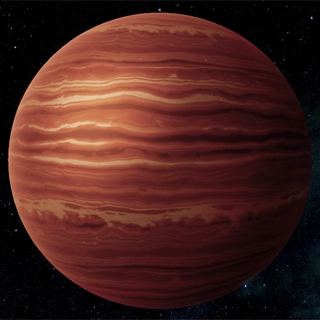
.
.
Capricorn Zeta IV B
Class
Class D Barren Trojan PlanetoidRadius
434 kmDistance from Star
1.132 AUMass
0.000035 EarthsSurface Gravity
0.007gLength of Year
338.13 Earth yearsLength of Day
10.8 Earth hoursSurface Temperature
-167.0°CSurface Composition
IcesWater
IcesAtmospheric Composition
NoneAtmospheric Pressure
NoneMoons
1 (275 km in radius, almost a double planet)Population
NoneNotes
Capricorn Zeta IV B is a Trojan, meaning it follows the gas giant Capricorn Zeta IV A in its orbit around the star, 753,130 km behind it. Its moon is a significant percent the radius and mass of the planetoid, resulting in the moon’s orbit heavily affecting the planetoid itself, almost to the point where they orbit each other.
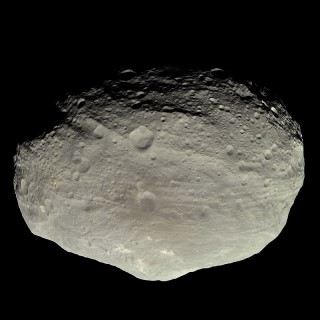
.
.
Capricorn Zeta V
Class
Class I Light Blue/White Gas GiantRadius
26,101 kmDistance from Star
1.571 AUMass
14.38 EarthsSurface Gravity
0.86g (no surface)Length of Year
713.63 Earth yearsLength of Day
9.6 Earth hoursSurface Temperature
-158.9°CSurface Composition
Hydrogen, Helium, Methane (gas giant)Water
IcesAtmospheric Composition
85% Hydrogen, 9% Helium, 6% MethaneAtmospheric Pressure
17.25 atmMoons
2 (72 km and 800 km in radius; the planet also has a thin icy ring)Population
NoneNotes
Capricorn Zeta V is a small gas giant with a surprisingly small number of moons, likely due to the gravitational effects of the larger fourth and sixth planets.
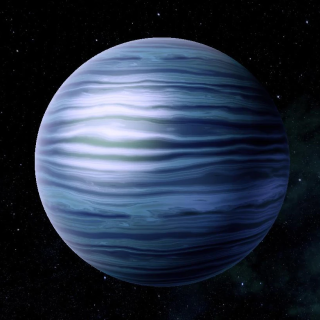
.
.
Capricorn Zeta VI
Class
Class I Dark Blue Gas GiantRadius
35,215 kmDistance from Star
2.928 AUMass
72.31 EarthsSurface Gravity
2.37g (no surface)Length of Year
1,166.71 Earth yearsLength of Day
12.3 Earth hoursSurface Temperature
-186.7°CSurface Composition
Hydrogen, Helium (gas giant)Water
IcesAtmospheric Composition
95% Hydrogen, 5% HeliumAtmospheric Pressure
3.62 atmMoons
17 (smallest is 14 km in radius, largest is 1,699 km in radius; the planet also has a thin icy ring)Population
NoneNotes
Capricorn Zeta VI is the outer system "Sweeper" gas giant; its gravity helps divert comets, asteroids, and other objects away from the inner system.
There is an unmanned listening post on the eleventh moon, which helps monitor transmissions in Klingon space.
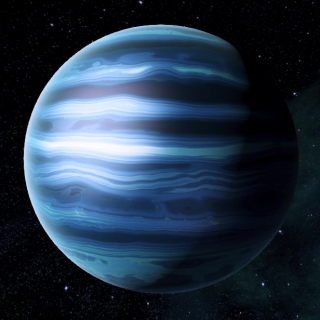
Categories: Star System | Star System
